2025 Loving Cities Index
One hundred thirty years ago, crusading Black journalist, sociologist, and activist Ida B. Wells published “The Red Record,” a stunning 100-page compilation of statistics and analysis detailing the widespread practice of lynching in the United States. This work, a highlight of her long and storied career, took a brutal practice and displayed it for all the world to see, energizing anti-lynching movements and helping shape wider public opinion.

Ida B. Wells in 1893.
The compilation and contextualization of lynchings was an arduous task. There were no records or statistics readily available from local or national governmental bodies. Wells had to rely on journalists at the Chicago Tribune, who had been recently gathering and verifying instances lynching across the country. Wells saw the assembling of critical data into accessible and compelling narratives to be indispensable, writing, “The way to right wrongs is to turn the light of truth upon them.”
Today, that light is growing dimmer: Americans are witnessing perhaps the greatest pullback of data from public view in our nation’s history. The upheaval in federal government agencies since President Trump’s inauguration in January has included the deletion of previously public data and statistics across a range of issue areas, including education, crime, gender and sexual orientation, public health, and economic activity. A BBC report in April detailed the flurry of activity on the part of climate scientists to save public data sets on weather and climate, raw information crucial for researchers to measure and model the future of the greatest threat facing humanity.
Data is at the heart of the Loving Cities Index, and each release takes place upon a different informational landscape. Schott pulls from a variety of resources, many of which are held at the federal level, like the data sets provided by the Office for Civil Rights (OCR) and National Center for Education Statistics at the U.S. Department of Education, and the American Community Survey run by the U.S. Census Bureau. These data sources are currently at risk of deletion, especially those housed at the Department of Education, which has come under sustained staffing and budget cuts. OCR’s Civil Rights Data Collection has been of special importance ever since collection began in 1968, pointing policymakers and advocates to the most urgent inequities facing children in our public education system.
But the question of measuring what matters extends far beyond the current threat of deleted databases.
Incomplete Data Means Unanswered Questions
Since 2004, the Schott Foundation has periodically released reports focused on the lives of Black male students in public schools. Pulling data for these reports has been a significant challenge due to what government agencies decide to report or not: for example, while all districts report graduation rates, comparatively few report those rates disaggregated by race and gender. Once the U.S. Department of Education no longer mandated such disaggregated data from schools and districts in the 2010s, many simply chose not to publish it.
Or consider the Food Access Research Atlas, compiled by the U.S. Department of Agriculture. The Atlas provides our nation’s best systematic look at food availability and food deserts, a pressing issue for young children and families that disproportionately impacts low-income neighborhoods and Black and Latino communities. Grocery store locations are self-reported by grocery companies themselves and evaluated by census tract. However, the grocery location data is from 2019, six years ago and before a global pandemic reshaped housing and commerce patterns across the country. The income and population data are in part derived from the 2010 census, now fifteen years old.
Without data that speaks to our priorities and concerns, all of us are left to navigate a blank map on matters large and small, as parents, voters, advocates, funders, and policymakers.
How Cities and Advocates Can Take the Lead
For decades, the United States held the distinction of having one of the most robust public records laws in the developed world, with federal and state Freedom of Information Act systems that allow anyone to request records and data related to how our government operates. Today, cities, school districts, and states can take the lead in collecting and releasing statistics in ways that are accessible and actionable by their constituents. Many of the largest cities in the country already have dedicated online portals designed to provide at least some of its data in an easy-to-read format for its residents, like the City of Boston’s Analyze Boston data hub. These are positive precedents to build upon.
A number of prominent grantmakers, including the Gates Foundation and the Robert Wood Johnson Foundation, have led the charge for “open access” of the research and data that their grant dollars fund, ensuring that other researchers and the public alike can use them free of charge. Foundations large and small can do their part to ensure that not only is the data publicly available, but that it is presented in an accessible manner, not just buried in an Excel spreadsheet.
Ida B. Wells conducted groundbreaking work in the fields of research and journalism. As a co-founder of the NAACP, she knew that knowledge was merely the first crucial step in a much larger effort. In her 1892 pamphlet “Southern Horrors: Lynch Law in All Its Phases,” she wrote in its final pages that “the people must know before they can act.”
The Loving Cities Index’s indicators can paint a picture of how much a city loves its children and families, but the painting is incomplete without current and robust statistics that tell a story inclusive of race, gender, income, disability, and other important factors. The prompt release of relevant data by agencies and policymakers should be a core component of advocacy efforts by grassroots community groups as they work to build a more just and equitable city for all its residents.
